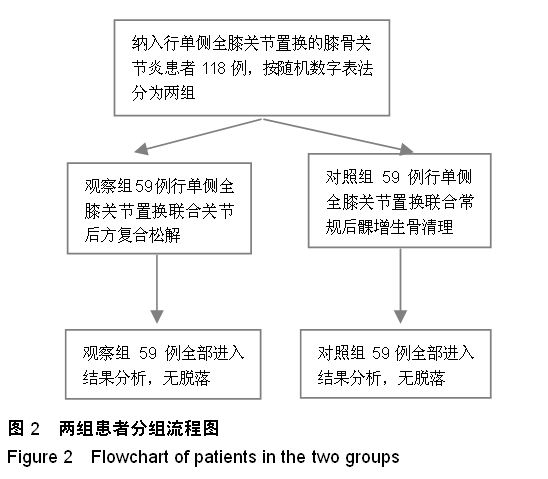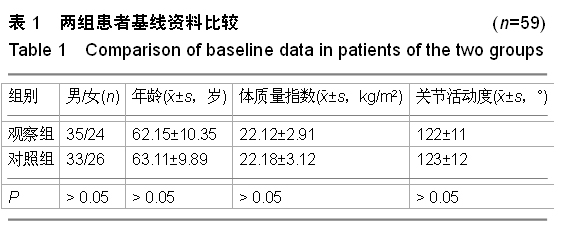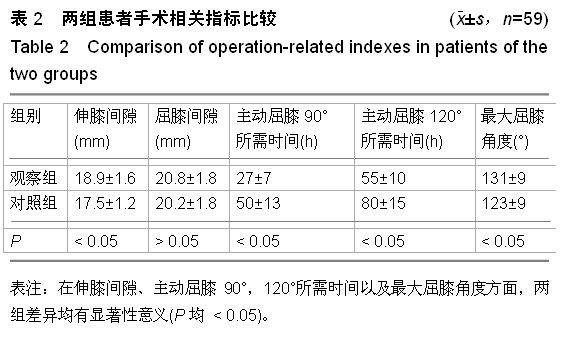| [1] 张福江,高志国,于建华,等.选择性松解膝内侧副韧带浅层在膝内翻全膝关节置换术中的应用[J].中国修复重建外科杂志,2008, 22(5):627-628.
[2] 吴海山,李晓华,吴宇黎,等.全膝关节置换术后粘连的关节镜松解术[J].中华骨科杂志,2001,21(6):354-357.
[3] 中华医学会骨科学分会.骨关节炎诊治指南(2007年版)[J].中国矫形外科杂志,2014,22(3):287-288.
[4] 戴繁林,吴海山,吴宇黎,等.全膝关节置换术中关节后方复合松解对关节间隙和术后活动度的影响[J].中华外科杂志,2013,51(2): 152-156.
[5] 王晓峰,陈百成,师晨霞,等.增加胫骨平台后倾角度、后交叉韧带部分松解对全膝关节置换术后膝关节运动影响的实验研究[J].中华外科杂志,2007,45(12):839-842.
[6] 查国春,孙俊英,董圣杰,等.外侧支持带松解对保留髌骨型全膝关节置换术后膝前痛的影响[C].//第六届《中华骨科杂志》论坛论文集,2013:318-325.
[7] 张明,孙华强,袁振,等.X线和MRI预测人工全膝关节置换术中内侧软组织松解范围研究[J].中华临床医师杂志(电子版),2011, 5(10):3050-3052.
[8] 荆鑫,祝云利,吴海山,等.经关节镜松解治疗全膝关节置换术后粘连的康复训练[J].中国临床康复,2002,6(16):2399.
[9] 刘忠堂,吴海山,李晓华,等.全膝关节置换术中股骨假体旋转对线的比较研究[J].中华创伤杂志,2008,24(3):169-172.
[10] Insall J, Ranawat CS, Scott WN, et al.Total condyhr knee replacement:preliminary report.1976. Clin Orthop Relat Res. 2001;(338):3-6.
[11] 符培亮,李晓华,吴宇黎,等.初次全膝关节置换股内侧肌中间入路与内侧髌旁入路置入假体的优势对比[J].中国组织工程研究与临床康复,2008,12(9):1793-1796.
[12] 严孟宁,王友,岳冰,等.软组织平衡实时导航在膝内翻全膝关节置换术中的初步应用[J].中华创伤骨科杂志,2011,13(12): 1139-1142.
[13] 徐岳林,戴号,丁盛,等.类风湿性关节炎全膝关节置换术中膝外侧支持带松解的应用[J].国外医学:骨科学分册,2004,25(1): 58-60.
[14] 姚建华,黄炎,李海鹏,等.后内角松解在膝关节屈曲内翻畸形行全膝关节置换术中的应用[J].解放军医药杂志,2013,25(9): 29-31.
[15] 孙华强.全膝关节置换内侧软组织松解范围的术前预测[D].山东大学,2010.
[16] 李广伟.全膝关节置换治疗成人膝外翻畸形:胫股角及膝关节活动度变化[J].中国组织工程研究,2012,16(26):4786-4791.
[17] 王友,朱振安,史定伟,等.膝关节屈曲挛缩畸形全膝关节置换术的软组织平衡[J].中华骨科杂志,2004,24(4):220-223.
[18] Buechel FF Sr.Long-term followup after mobile bearing total kneereplacement.Clin Orthop Relat Res.2002;(404): 40-50.
[19] 厉驹,卢建华.全膝关节置换术后膝关节僵硬手法松解治疗[C].//2006全国骨科药物与临床应用学术研讨会.2006:243-245.
[20] Attar FG,Khaw FM,Kirk LM,et al.Survivorship analysis at 15 years of cemented pressfit condylar total knee arthroplasty.J Arthroplasty.2008;23:344-349.
[21] 王维军,牛东生.重症类风湿性关节炎膝关节屈曲挛缩畸形全膝关节置换术的软组织平衡[J].中国修复重建外科杂志,2008, 22(10):1173-1176.
[22] 何勇,欧阳桂林,肖涟波,等.全膝关节置换治疗僵硬膝关节的早期疗效分析[J].中华骨科杂志,2010,30(12):1175-1180.
[23] Burnett RS,Haydon CM,Rorabeck CH,et al.Patella resurfacing versus nonresurfaeing in total knee arthroplasty:results of arandomized controlled clinical trial at a minimum of 10 years’ follow up. Clin Oahop Relat Res. 2004;(428):12-25.
[24] 徐中海,张骏,杨迪,等.全膝关节置换术后获得性低位髌骨的研究进展[J].中华创伤杂志,2012,28(9):862-864.
[25] Ries MD,Haas SB,Windsor RE.Soft-tissue balance in revision total knee arthroplasty.J Bone Joint Surg Am. 2003;85-A Suppl1:S38-42.
[26] Mihalko WM,Whiteside LA.Bone resection and ligament treatment for tie'on contracture in knee arthroplasty. Clin Orthop Rdat Res. 2003;(406):141-147.
[27] 李付彬,朱台航,徐向峰,等.全膝关节置换治疗重症类风湿性关节炎膝外翻畸形[J].中国实用医刊,2012,39(23):39-41.
[28] 朱迪.影响全膝关节置换术后膝关节活动度手术相关因素的研究进展[J].中国矫形外科杂志,2012,20(1):45-48.
[29] 白朝晖,丁盛,徐岳林,等.静脉麻醉下手法松解术在人工膝关节置换术后康复中的应用[J].中国医疗前沿,2007,2(18):9-11.
[30] Olcoft CW,scon RD.A eomparation of 4 intraoperative methods to determine femoral component rotation during total knee arthroplasty.J Arthroplasty.2000;15:22-26.
[31] 陶坤.国人TKA术中胫骨假体旋转确定方法的比较及不同胫骨假体旋转对胫股关节的生物力学影响[D].第二军医大学,2008.
[32] 郭峰,刘晋平,李正南,等.经髌骨正中入路与内侧髌旁入路行人工膝关节表面置换术临床效果分析[J].中国综合临床,2012,28(11): 1204-1207.
[33] 孙俊英,汪强,马良波,等.经小切口股内侧肌入路与小切口髌骨内侧旁入路行全膝关节置换术比较的临床研究[J].中华关节外科杂志(电子版),2008,2(3):274-279.
[34] 叶川,刘日光,汤晋,等.膝骨性关节炎双侧同期全膝关节置换和单侧膝关节置换的比较[J].中国组织工程研究,2014,18(35): 5583-5588.
[35] 徐超,侯彦杰,伊力哈木•托合提,等.保留髌骨型全膝关节置换修复退变性骨关节炎:髌软骨退变等级对疗效的影响[J].中国组织工程研究,2014,18(31):4939-4943.
[36] 覃承诃,裴国献,罗吉伟,等.全膝关节置换术中外侧支持带松解的指征[J].中华创伤骨科杂志,2006,8(4):396-397.
[37] 许超,厉驹,武中庆,等.全膝关节置换术后僵硬麻醉下手法松解术[C].//全国中西医结合学会骨伤科专业委员会第十二次学术年会暨浙江省中西医结合学会骨伤科专业委员会第十次学术年会论文汇编,2004:279-280.
[38] Ho WP,Cheng CK,Liau JJ.Morphometrical measurements resected surface of femurs in Chinese knees:correlation to the sizing of current femoral implants.Knee.2006;13:12-14.
[39] 钱科军,姜宇.膝关节置换中的屈曲挛缩与软组织松解[J].中国组织工程研究,2013,17(48):8319-8324.
[40] 李守民,徐玮,孔荣,等.全膝关节置换中的改良截骨[J].中国组织工程研究,2013,17(13):2320-2326.
[41] 朱国兴,杨玉生,施克勤,等.人工全膝关节表面置换术中后关节囊切断松解的应用[J].江苏医药,2007,33(9):877-879.
|




.jpg)